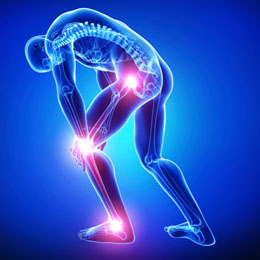Growing pain is not any illness and does not require any medical treatment. However, if the pain turns severe, it may make your child very restless. This Buzzle post has more information on growing pains in kids, and how to deal with it.

As the name suggests, growing pains are experienced by kids in the age group of 3 to 8 and adolescents in the age of 8 to 12. The condition ceases to exist as the child grows into his teen years. It occurs in both legs and it can happen to any child, irrespective of the gender.
Growing Pains in Children
Usually, children start experiencing these pains just before going to bed. Sometimes, the child may wake up in the middle of the night with severe pain. The intensity is noticeably higher on those days when they indulge in extra physical activity. The good part is that the pain does not last for a long time and no matter how severe the pain is, it does stop by morning.
These pains are caused due to tired muscles as a result of poor posture while standing, sitting, or walking. In some rare cases, it has been found that if a child is upset and is under emotional stress, it can trigger more intense pain than usual.
There are some differences between growing pain and the one caused by injury. The characteristics of the former are discomfort, aches, and cramps in legs. The pain is felt mostly in the front of the thighs, behind the knees, and in the calves. It gets relieved with massaging, whereas but pain due to any other reason will get aggravated. These pains are not accompanied by any other symptom, like weight loss, fever, swelling in the joints, etc. which may be observed in other medical conditions.
Treatment
Leg pain can be relieved with the help of some simple measures taken at home. Heat compression by placing a heating pad over the area can have a soothing effect. A light massage on the legs also helps. When the pain is in the calf, a bit of stretching helps in pain management. Hold the leg a few inches above the bed and pull the foot and each of toes mildly in the upward direction. As a result, the spasm will get broken and bring relief. If all these measures fail, OTC pain killers may be used, but only after consulting the doctor. Remember NOT to administer aspirin to kids, as it may cause serious health complications.
Many experts believe that by doing simple stretching exercises, these pains can be prevented. This can be done by bending the body forward to touch the ankles while keeping the knees straight. This way the heel cords get stretched and the possibility of pain in the calves decreases.
Growing pains in legs are harmless and is a part of the growing process. You should not worry about it and assure your child about the same so that they do not get depressed. However, if the symptoms persist throughout the day accompanied by fever, difficulty in running or walking, swelling and redness of legs, etc. you should take your child to the doctor.
In the last trimester of pregnancy, some women experience a bad lower back pain which spreads to the thighs, knees, calves, etc. This pain is often referred to as growing pains during pregnancy. The possible causes are believed to be hormonal changes, extra pressure on the lower back and weight gain. Due to all these factors, the muscles and ligaments get extra pressure and cause pain. Cold and warm compression alternatively is the best way to lessen the pain.
Disclaimer:
This Buzzle article is for informative purposes only, and should not be used as a replacement for expert medical advice.


 As the name suggests, growing pains are experienced by kids in the age group of 3 to 8 and adolescents in the age of 8 to 12. The condition ceases to exist as the child grows into his teen years. It occurs in both legs and it can happen to any child, irrespective of the gender.
As the name suggests, growing pains are experienced by kids in the age group of 3 to 8 and adolescents in the age of 8 to 12. The condition ceases to exist as the child grows into his teen years. It occurs in both legs and it can happen to any child, irrespective of the gender.